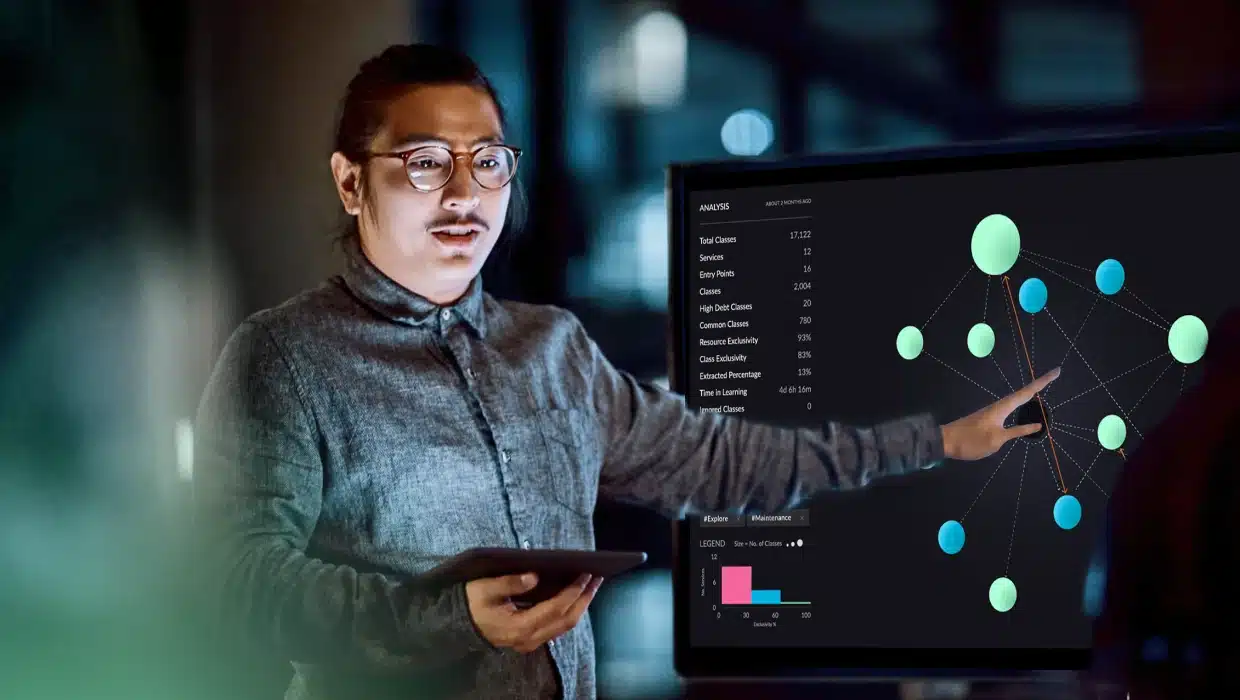Navigating the path through the complexities of technical debt, software architecture refactoring, and application modernization is a major challenge facing architects and development teams today. According to National Geographic, navigation is both an art and a science. The earliest forms of navigation used known landmarks to arrive at a destination. It wasn’t until sailors learned how to use the stars that they ventured onto the open seas. However, navigation also required correcting courses to avoid obstacles that could sink a ship.
While safely getting from point A to point B may have been navigation’s original goal, speed was also a concern. Reaching a destination during prime hunting season was essential for a reliable food supply. Navigators were continuously assessing routes to minimize delays. When navigation tools, such as sextants and compasses, became more reliable, expectations grew. Arriving within a particular time window wasn’t enough. Cargo was expected to arrive undamaged despite rough seas. Passengers traveled the fastest, most reliable routes.
In the world of software development, the analogy of navigation finds its modern counterpart in continuous modernization. Similar to ancient navigators adapting to new tools, today’s software developers employ cutting-edge technologies for constant refactoring and refinement. Continuous modernization involves the ongoing process of updating software to match the evolving tech landscape.
Just as sailors correct their course to avoid obstacles, developers identify and address challenges in real-time. By embracing continuous modernization, businesses ensure their software not only meets but exceeds user expectations, adapting swiftly to market demands and emerging technologies. This agile approach allows organizations to maintain a competitive edge and deliver seamless user experiences in the ever-changing digital realm.
Navigating a Path to Architectural Excellence
For software organizations, navigating a path to excellence means using human creativity and imagination alongside appropriate modernization tools for exceptional results. Just as early navigators watched their environment for changes, software architects must be able to see what is happening in real time to make adjustments before a disruption occurs. They must continuously assess their location to avoid drifting off course and creating unnecessary delays.
Unlike navigators of old, today’s software architects have access to architectural observability tools for end-to-end visibility. Navigators had to rely on knowledge passed from one navigator to another. Sailors learned the safest and fastest routes from centuries of shared experiences. But modern observability tools allow software engineers to condense years of monitoring into minutes. They do not have to wait months or years to correct structural flaws.
Related: Creating a Technical Debt Roadmap for Modernization
Organizations looking to modernize their applications must combine correction methods with observability to maintain a successful path of continuous modernization. These companies must tap into creativity and imagination to sustain a culture that successfully manages the journey of software evolution.
Why Visibility Matters in Software Architecture Excellence
Navigational visibility means watching where you are going. It’s about using the next measuring point for determining direction. Suppose the destination is the mouth of the Amazon. Navigators can assume that as long as they keep the shore in sight, they will reach the Atlantic Ocean. What they can’t determine is how soon or how safely they will arrive. Without measuring the distance between a boat and the shore at frequent intervals, navigators do not know if they are on course.
The Science of Visibility
Navigating software modernization is no different. Development teams need to see what their code is doing. For example, teams have typically used the following tools to monitor code performance:
- Metrics. Teams can gather data on memory usage and requests per second to assess resource utilization.
- Logs. Logs record events and errors that occur during execution. Teams can use logs to assess performance or identify anomalies.
- Traces. Teams can use tracking tools to trace requests and responses as they move through a system to locate where execution errors occur.
These monitoring tools make visibility possible; however, the value of collected data depends on the extent and frequency of the measurements. That’s where the art of visibility enters the process.
The Art of Visibility
How often a sailor measured a ship’s relative position depended on the navigator. Longer intervals between measurements increased the chances of drifting off course. Shorter periods between calculations could result in unnecessary course corrections that impact transit time. Finding the perfect balance was an art.
Today, 86% of international software development companies use an agile methodology, with the majority following a Scrum framework. That means updated software could be deployed every 30 days since the maximum sprint length is one calendar month. The official Scrum guidelines recommend incremental software releases at least every two months.
Although every sprint may not result in a release, DevOps should monitor each increment. For many organizations, that target may be unreasonable if sprints occur every two weeks. They may not have the resources to support such a pipeline. However, extending the time between measurements may allow the software to veer off course. Software teams must find the right balance.
Charting a Course for Software Excellence
Navigating an agile process is the same as navigating a boat down the Amazon. It’s striking the right balance to maintain a design without delaying releases. Waiting until development is complete to assess a codebase is like using the shoreline to navigate the Amazon. You’ll reach the Atlantic eventually, but the condition of the boat, passengers, and crew is questionable.
Incremental measurements make successfully navigating software modernization possible. Agile methodologies divide a project into intervals that enable organizations to deliver updates efficiently with less drifting and technical debt. The process ensures continuous improvement and is the cornerstone of continuous modernization strategies.
Why Architectural Observability Is Essential
Architectural observability is the ability to analyze an application statically and dynamically and understand its architecture, observe drift, and find and fix architectural technical debt.
Success depends on the monitoring tools that enable architectural visibility, and the right tools make navigating modernization more reliable by looking at visibility data in context. Architectural observability makes managing architectural technical debt a science—based on data.
The Art of Observability
Observability tools give architects and engineers more time to explore unique and innovative solutions. They provide better control over a system’s architecture as it evolves. Deploying architectural observability solutions allows software teams to experience the art of observability.
When software teams operate reactively, they have little time to look beyond the immediate problem. Their response can often lead to more technical debt. Like a becalmed sailing ship, they cannot progress. Their modernization journey stalls.
Carefully monitoring observability results enables organizations to address architectural drift before it becomes a problem. They can break down the tasks into segments that can be accomplished incrementally with less impact on the modernization process. Development teams can incorporate architectural changes into their normal workflow, minimizing disruptions.
Related: How Continuous Modernization Can Address Architectural Drift
The art of architectural observability involves learning how to use the right tools. Selecting and deploying these tools frees architects and engineers from mundane monitoring tasks. They have time to discover solutions and devise implementation plans that deliver results without disruption.
When architectural drift is allowed to continue, the build-up of technical debt eventually grinds developer productivity to a halt, and the resulting corrections must disrupt development because they must be deployed quickly. Those disruptions can lead to frustrations. When architectural corrections are integrated into the continuous modernization process, technical debt is managed and workflows are not interrupted.
The Science of Architectural Observability
Navigation tools have moved far beyond the sextant. Today, navigators rely on global positioning systems (GPS) to determine their relative position. These satellite-based systems use contextual data to update routes when unexpected disruptions occur, and they recalibrate directions when an object moves off course.
Software architecture observability tools provide architects and engineers with similar capabilities. They can analyze application architecture, identify possible concerns, and monitor technical debt. They can even suggest an appropriate path to success.
The right architectural observability tools continuously monitor system architecture for the following:
- Sources of technical debt such as cross-domain pollution, database relationship violations, and high debt classes.
- Deviations from baseline, such as new services or classes, dead code, or exclusivity changes.
- Anomalies that weaken architectural integrity.
Architectural observability delivers contextual data and actual “to-do” lists in real-time for a more comprehensive analysis and a better understanding of system performance. Architects can proactively address technical debt and architectural drift using more robust information. They can assess the impact and respond proactively rather than devise a reactive solution to an immediate problem. Much like early navigators, teams that make reactive decisions cannot assess the ramifications to the overall journey.
Unlock Software Excellence with Architectural Observability
Companies can continue to operate with the tools equivalent to a navigator’s sextant and compass. They can wait years for their collective experiences to lend accurate observability. Alternatively, they can use the equivalent of a GPS system to guide their modernization efforts, and they can take advantage of advanced architectural observability tools to ensure a continuous modernization process that delivers software excellence.
vFunction’s Architectural Observability Manager is a solution that incorporates the art and science of navigating a continuous modernization path. Businesses can consistently achieve software excellence by relying on AI-driven tools that offer a reliable path forward. To see how we can help you navigate your modernization journey, request a demo.






